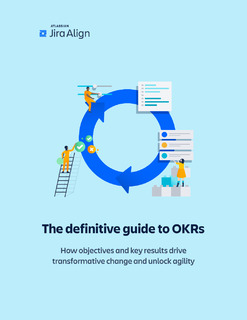Agile enterprises set a strong foundation that allows teams to respond to any disruption in the world, regardless of the cause. Setting that foundation is an extremely challenging task.
Objectives and Key Results (OKRs) drive alignment across the organization, promote adaptability to new changes, and give bi-directional visibility towards the progress and success of work. This foundation creation of distributed decision making and trust in each team promotes a culture of agility and ownership across the business.
OKRs drive highly aligned teams to rapidly respond no matter what happens, showing teams where to go, not how to get there. This is the hallmark of the agile enterprise.
Our definitive guide to OKRs will
- OKR overview: Introduce you to OKRs, how they compare to other measurement metrics, and why agile enterprises adopt OKRs.
- Template & examples: Provide a template to creating the perfect OKR, with examples of both great OKRs and poor OKRs.
- Scoring: Overview on how to score OKRs and what the scores represent to your teams.
- OKR alignment: Guidance on how to create and align OKRs at the leadership, business unit, and team level.
- Cautions: We share our lessons learned on what to look out for when adopting OKRs, pitfalls to avoid, and antipatterns to look for.

